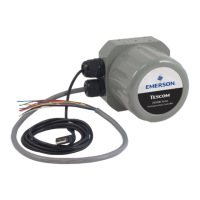
Do you have a question about the Emerson Tescom ER5000 Series and is the answer not in the manual?
| Model | ER5000 Series |
|---|---|
| Category | Controller |
| Type | Electronic Pressure Controller |
| Operating Temperature | 32°F to 122°F (0°C to 50°C) |
| Input Voltage | 24 VDC |
| Output Signal | 4-20 mA, 0-10 VDC |
| Communication | RS-485 |
| Display | LCD |
| Materials | stainless steel |
| Certifications | CE |
Safety precautions for TESCOM™ Electronic Controllers, including warnings and cautions for selection, installation, use, and maintenance.
Safety precautions for TESCOM™ Regulators, covering selection, installation, use, maintenance, and potential hazards.
Explains text formatting, icons, and cross-references used throughout the manual for clarity.
Provides guidance on using the Table of Contents, Bookmarks, and navigation buttons within the manual.
Details the base styles, features, analog signal types, and Cv configuration for the ER5000 series.
Lists key features of the ER5000, including communication, ports, pressure sensors, and software compatibility.
Provides detailed dimensional drawings of the ER5000 controller from side perspectives.
Presents dimensional drawings of the ER5000 controller from top and bottom perspectives.
Details the side view dimensions specifically for the ER5050 Hazardous Location model.
Provides top and bottom view dimensions for the ER5050 Hazardous Location model.
Lists technical specifications for the ER5000, including enclosure, weight, media, ports, power, and environment.
Details the specifications for the ER5050 Hazardous Location model, covering certifications, enclosure, media, and environment.
Lists available accessories for the ER5000, including part numbers and descriptions.
Highlights new features and enhancements in the ER5000, including USB connectivity, software upgrades, and new control modes.
Provides guidance on replacing an ER3000 controller with the ER5000, including considerations for hazardous locations.
Explains how to use the ER5000 with existing ER3000 software, including jumper settings and compatibility notes.
Describes the ER5000's function as a microprocessor-based PID controller for precise pressure control.
Explains the fundamental principles of PID control, including feedback loops, error detection, and stable states.
Illustrates the roles of Proportional, Integral, and Derivative components in PID control using car driving analogies.
Details the process of tuning PID parameters (Kp, Ki, Kd) to achieve optimal system response and stability.
Provides practical guidelines and tips for adjusting Proportional, Integral, and Derivative settings for effective tuning.
Describes a typical non-hazardous application of the ER5000 for controlling system pressure with an air actuated regulator.
Explains how the ER5000 controls system pressure by adjusting pilot pressure to an air actuated regulator.
Discusses challenges and conditions when using non-venting regulators in closed loop applications with the ER5000.
Explains how the ER5000 can monitor system variables and activate control limit conditions upon exceeding set limits.
Details the three primary control modes for the ER5000: Internal Feedback, External Feedback, and Cascade.
Describes the Internal Feedback mode, using the ER5000's internal sensor for monitoring and open-loop control.
Explains the External Feedback mode, utilizing a user-supplied external transducer for system pressure monitoring.
Details Cascade Mode, implementing a PID loop within another PID loop for enhanced stability but slower response.
Definitions of terms related to PID controllers and their tuning, including Error, Feedback, and Hazardous Location.
Definitions of terms associated with regulators, such as Accuracy, Air Actuated, and Control Element.
Essential safety and preparatory steps before installing and operating the ER5000 controller.
Provides a quick reference guide to ER5000 jumpers, terminal blocks, wiring colors, and LED indicators.
Instructions to verify all items are present in the ER5000 box upon receiving the shipment.
Guides the user to verify the ER5000 configuration matches the specific application requirements.
Ensures all operational requirements, such as media quality and component compatibility, have been met.
Confirms that all safety requirements and warnings outlined in the manual have been understood and met.
Step-by-step instructions for physically mounting the ER5000 controller onto a regulator.
Details on connecting and verifying the 24V DC power supply for the ER5000 controller.
Instructions to check and configure Jumper J6 for external feedback source selection (4-20mA or 1-5V).
Guides the connection of transducer wiring to provide a feedback signal to the ER5000 controller.
Instructions for connecting the USB cable to the ER5000 for communication with a computer.
Step-by-step guide for installing the ERTune™ software required for ER5000 setup and tuning.
Details on connecting pneumatic pressure sources to the ER5000's inlet and outlet ports.
Final steps for starting up the system and optimizing performance using the ERTune™ program.
Important safety and preparatory notes before proceeding with ER5000 installation variations.
Overview of available wiring options for configuring the ER5000 for various application requirements.
Description of the ER5000's terminal blocks and color-coded wires for easy identification and connection.
Configuration of jumpers (J5, J6, J14, J15) to select between 4-20mA and 1-5V input sources.
Explanation of the ER5000's LED indicators for monitoring controller status and troubleshooting.
Detailed wiring instructions for connecting the ER5000 to a 24V DC power supply for all applications.
Wiring diagram for providing a 0-5V analog setpoint signal to the ER5000 from a potentiometer.
Wiring instructions for supplying an analog setpoint from an active variable current or voltage source.
Wiring diagram for providing an analog setpoint from a passive PC or PLC D/A card, using ER5000 power.
Wiring diagram for providing an analog setpoint from an active PC or PLC D/A card, powered by the D/A card.
Wiring configuration for controlling a Profile using external digital inputs, without requiring a PC connection.
Wiring instructions for connecting the ER5000 via RS485 using an RS232 to RS485 converter.
Wiring instructions for connecting the ER5000 via RS485 using a USB to RS485 converter.
Wiring for multiple ER5000 controllers in an RS485 network using an RS232 to RS485 converter.
Wiring for multiple ER5000 controllers in an RS485 network using a USB to RS485 converter.
Correct wiring procedures for connecting a two-wire transducer for feedback signal to the ER5000.
Correct wiring procedures for connecting a three-wire transducer for feedback signal to the ER5000.
Correct wiring procedures for connecting a four-wire transducer for feedback signal to the ER5000.
Wiring for monitoring 4-20 mA external feedback signals using a floating input with a PC or PLC.
Wiring for monitoring 4-20 mA external feedback signals with ground referenced input via PC or PLC.
Wiring for monitoring voltage produced by a two-wire transducer across the ER5000's internal resistor.
Wiring for monitoring voltage produced by a three-wire transducer across the ER5000's internal resistor.
Wiring for monitoring voltage produced by a four-wire transducer across the ER5000's internal resistor.
Instructions for switching feedback sources between two external transducers for ER5000 'F' models.
Details on monitoring additional analog inputs for data acquisition and trend analysis in the ER5000.
Wiring to monitor the ER5000's internal sensor via analog output (4-20mA or 0-10V).
Wiring configurations for utilizing the ER5000's digital outputs to trigger external system processes.
Wiring instructions for the Suspend Mode feature on ER5000 'F' models, pausing PID and closing valves.
Special requirements and procedures for installing the ER5050 hazardous location model.
Overview of the ERTune™ program interface, including menus, tabs, panels, and fields for navigation.
Covers essential features of the ERTune™ program, including installation, user interface, and basic operations.
Details the controls within the ERTune™ Tuning Tab for manually adjusting PID parameters for optimal performance.
Guide on creating, editing, and managing multi-step command sequences (Profiles) for the ER5000.
Instructions for saving, opening, and reviewing acquired data files using the ERTune™ Data Tab.
Explains how to modify ER5000 system configurations using the Configure Tab for application-specific needs.
Introduction to the Diagnostic Tools Tab, providing access to troubleshooting tools and reference materials.
Accesses advanced configuration options for the ER5000, generally not required for standard applications.
Configures external feedback sources and setpoint behavior on power-up for ER5000 advanced settings.
Allows monitoring and modification of ER5000 internal variables, with options to add variables to data acquisition.
Adjusts minimum pulse width for solenoid valves to control ER5000 responsiveness and activation thresholds.
Controls the rate at which the ER5000 monitors feedback and generates responses, affecting controller responsiveness.
Provides precise control over ER5000 response to errors within the deadband using pulsed solenoid activation.
Enables and manages password protection for the ERTune™ program to secure access to advanced settings.
Details communication methods for the ER5000, covering USB direct connection and RS485 converter options.
Explains how the ERTune™ program facilitates ER5000 setup, tuning, and profile creation for complex sequences.
Provides sample programs illustrating the ER5000 Dynamic Link Library (DLL) usage in various programming languages.
Instructions on locating and using the ER5000 DLL file for Windows-based program development.
Describes the TESCOM protocol, including its functions like Startup, Read/WriteNetVar, and Profile commands.
Troubleshooting steps for ERTune™ program file location and manual installation of the USB device driver.
Addresses issues related to jumper configuration, LED indicators, ERTune™ program opening, and pressure response.
Guidance on configuring converters and checking resistance values for reliable RS485 communication.
Addresses issues with ER5000 profiles, particularly concerning digital input commands and their interpretation.
Lists and describes ER5000 internal variables accessible via USB or RS485 interface.
Details variables related to setpoint and feedback signals, including conversion formulas for counts to percentage.
Defines configuration variables such as Control Mode, Node Address, Serial Number, and ER3000/ER5000 Mode.
Lists and explains variables for tuning the inner PID loop, including Proportional, Integral, and Derivative constants.
Lists and explains variables for tuning the outer PID loop, including Proportional, Integral, and Derivative constants.
Details analog input variables, their compensation, and conversion formulas for different modes and bit depths.
Defines variables related to pressure profile execution, such as loop count and profile step type.
Describes the variable controlling single pulse operation for solenoid valves in the ER5000.
Details parameters for Pulse Mode operation, including Period, Width, Deadband, and Enable settings.
Defines variables for controlling digital outputs and generating analog output signals from the ER5000.
Explains PWM control variables for solenoid valves, including shutoff flags, task delay, and sensor limits.
Describes Gain and Offset variables used for adjusting feedback signal accuracy and calibration.
Sets conditions for the controller if programmed limits are exceeded, defining actions for limit violations.
Lists CE conformity and European Union requirements, including EMC directives and EN standards.
Details ATEX, IECEx, and cCSAus certifications and special requirements for the ER5050 hazardous location model.
Confirms ER5000 conformance to European Union requirements, including EMC DIRECTIVE and IEC/EN standards.
States ER5000 conformance to FM Standards, including FM Class 3600 and FM Class 3615.
Outlines the warranty terms for the ER5000, including coverage periods, exclusions, and claim procedures.
Guides users on installing the .NET Framework 3.5 required for ERTune™ compatibility on Windows 8 PCs.
Provides instructions for installing the ER5000 USB driver on Windows 8, addressing potential driver signature errors.
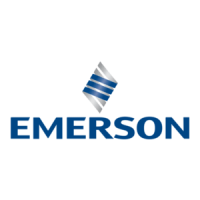
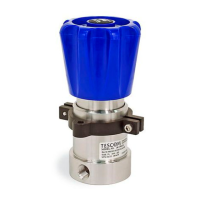
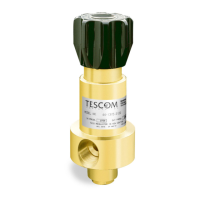








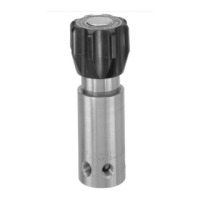
